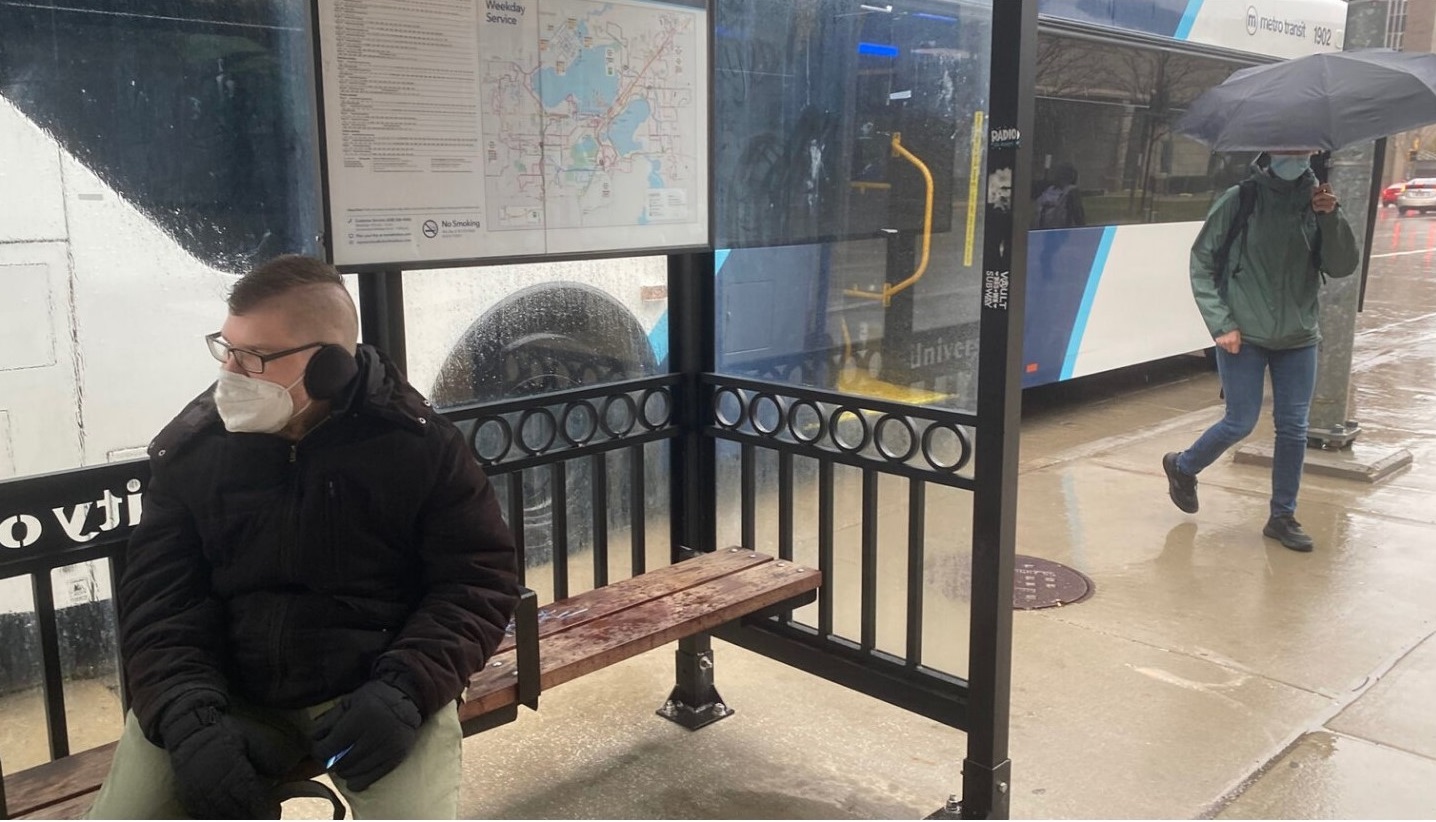The Case for Still Masking on Madison Metro in 2023
Dan Fitch | October 4, 2023


We all know that it feels like many Americans have given up on masks in public, but the bus is one place in Madison that you can reliably see some folks masking up. What's the science behind masking on transit? And why might you want to consider joining those who mask on public transit, and encouraging others to mask up?. Attitudes in our society seem to have a steady, almost magnetic drift toward "COVID is over." But a quick look at the wastewater maps, especially right here in Wisconsin, will show that COVID is certainly not over; it's just killing fewer people than at its height. It's still harming folks and disabling them. As I write this, my partner is quarantining with a nasty case of COVID that has left her unable to do much of anything for days. Deaths due to COVID in the US fell below 1000 a week for a while finally this summer, but are back on the rise. We can expect hospitalizations and deaths to rise more this fall and winter, again. During the week of September 23, 2.7% of the people who died in the US were killed by COVID or its side effects; that doesn't sound like that much, but it's still one of the biggest killers beyond heart disease, cancer, and deadly accidents. If wearing masks can help prevent tens (or possibly hundreds) of thousands of deaths per year, why aren't we making it a habit? It's worth considering who benefits from the “COVID is over” narrative framing that oozes around what passes for our mass media: it's mostly people trying to maximize profits by going “back to normal”, or save money by choosing to not mitigate infectious disease. The good news is, there are still folks who want to protect each other; in my non-scientific bus surveying this summer, about 20% of people wear masks on the routes I ride. And keep in mind that it's not just COVID: masks are also effective in helping stop the spread of other viral diseases. So why should you be one of the masking crew? As the CDC has said repeatedly, masking is most effective in crowded spaces or places with poor ventilation. Why? Because COVID and other respiratory viruses are airborne, meaning they spread in an aerosol that floats around in the air and collects in the air, particularly in enclosed spaces. Matthew Cortland explains that “The less COVID-19 that’s in the air around us, the safer we are. Masks reduce the amount of that infectious aerosol. The science is very clear.” (I'm still masking on transit and anywhere indoors with more than 1 or 2 people, but I know I'm an outlier here. ... on the plus side, I have only had COVID once.) If you've been on a packed bus, you know the ventilation is not great unless the windows are wide open. Buses and trains have much worse ventilation systems than planes. So if anyone on the bus is breathing out disease, the best way to reduce the risk for everyone is to mask up. Many people who ride the bus don't have a different transit option; I don't own a car, so if I need to get somewhere fast, the bus is often my only choice. Elderly and immunocompromised folks at risk in our community should not be excluded from using buses safely. Cortland says that even if you're up to date on vaccinations, COVID-19 can still cause long-term health complications that are often quite serious. Yes, we've all heard about the mysterious symptoms associated with long COVID, but COVID-19 also raises your risk of diabetes, blood clots, strokes, myocardial infarction, heart failure, and other Bad Times. Scientists are still studying how COVID works, but it seems it can actually sneak its way into almost any system in your body and wreak havoc. That's why sometimes symptoms are very different from person to person. Why risk all that for a bus ride, when the simple act of wearing a mask will help protect your bod? Plus, it's not just about protecting yourself, though that's certainly part of it. Katelyn Jetelina, an assistant professor of epidemiology at the University of Texas Health Science Center at Houston and the author of the Your Local Epidemiologist newsletter reminds us, “I would certainly still wear masks on public transit. ... Not just for individual-level risks, but also to help those that are much higher risk, and for those vulnerable pockets in the community.” Keep in mind, as well, that COVID variants have gotten more effective at spreading over time. (Since we haven't kept the spread down enough, humanity has kind of set up a great breeding environment for the viruses to evolve in. Great job, everybody!) So you need to remember a cloth or surgical mask really only stops the virus that's coughed directly at you; you'll still be breathing in all the aerosolized viral particles. You need an N95 mask to filter the air you breathe, and if you happen to be asymptomatic but breathing out viral particles, a well-fitting mask will keep them inside so that you get to enjoy all those sweet, sweet viruses by yourself instead of spreading them around town. Here's a simple mask test: can you smell anything, besides your own breath? Perfume, perhaps, or maybe some less pleasant smells? That's a sign that small particles are getting in and out of your nose and lungs unfiltered. If you have an N95 on and smells are getting through, that's most likely a sign you need to fit the mask to your face better so there aren't gaps. We shouldn't need a mask mandate to protect ourselves and our community — just mask up to reduce the spread of disease on public transit! Normalize it. It's a no-brainer. To read more local voices for covid safety, visit https://uwworkersgroup.substack.com/ |